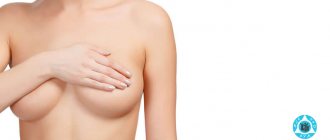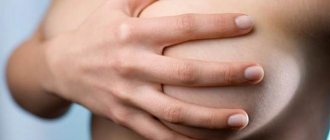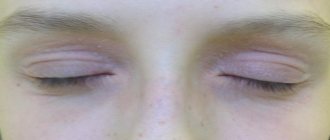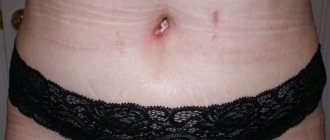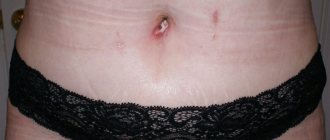The mother's breasts begin to secrete milk in response to the baby's suckling. The more the baby eats, the more milk is produced in the breast. Knowing how milk is formed in the breast will help the mother understand the process of breastfeeding.
The mammary gland is an organ consisting of several parts:
ALVEOLUS CELLS: Groups of milk-producing cells, the alveoli are like grapes in a bunch.
LOBE: parts of the mammary gland that make milk; each lobe contains cells of the alveoli and milk ducts.
MILK DUCTS: The ducts that carry milk to the nipple and areola area.
AREA – AREOLA: dark area around the nipple.
NIPPLE: The protruding part of the breast where the milk ducts open.
During pregnancy, the breasts become fuller and softer - this is a sign that the alveoli are getting ready to work. Some women may not feel these changes in their breasts at all - they will appear only after the birth of the child. Already after 16 weeks of pregnancy, a restructuring occurs in the breast and the gradual formation of colostrum begins. However, not every mother will see leakage of colostrum; this depends on the obturator muscles of the nipple, but does not at all indicate the volume of milk that the breast will be able to produce in the future.
The alveoli begin to produce milk in response to the hormone prolactin. After childbirth, the level of prolactin increases sharply, and it also increases while the baby is sucking the breast. Also during sucking, the level of the hormone oxytocin increases. This hormone acts on the smooth muscles of the milk ducts, which ensure the movement of milk from the alveoli to the nipple. This effect of sucking on milk production is called the milk ejection reflex. High levels of the hormones prolactin and oxytocin contribute to feelings of happiness and maternal feelings in nursing mothers. Prolactin also provides a natural contraceptive effect for women during breastfeeding.
The milk ejection reflex occurs when the baby begins to suckle. Nerves in the breasts send signals that promote the production of prolactin and oxytocin, which leads to the production and movement of milk through the milk ducts into the nipples. This reflex makes breastfeeding easier for your baby, occurring within a few seconds to a couple of minutes after breastfeeding begins. When the reflex is triggered, some women feel a slight tingling sensation in their chest. The milk ejection reflex can also work at other times: for example, when a mother hears her baby crying, or simply thinks about him with love. If you're producing more milk than you need and it's starting to leak out of your nipples, try expressing a little bit of milk first before breastfeeding your baby.
Many factors can negatively affect the milk ejection reflex: anxiety and restlessness, pain, embarrassment, stress, cold, excessive caffeine consumption, smoking, alcohol and certain medications. In mothers who have had breast surgery, the nerves that support the reflex may be damaged. In this case, you will need to consult a breastfeeding specialist to solve the problem individually.
Types and shapes of nipples. Correction methods
There are 8 types of female nipples. Each of them is a variant of the norm. Often women are dissatisfied with the size and shape of their nipples and consider them a flaw. Often, an unusual structure is a unique feature of an organism. Sometimes deformation occurs due to disease. A woman must notice changes in time and find out their cause. Shape correction is carried out for aesthetic and medical reasons. The Butko Plastic clinic performs surgeries to correct the shape of the areola and nipples. All manipulations are carried out using safe anesthesia on modern equipment.
Paget's disease (nipple cancer)
The most common treatment for Paget's disease is surgery. The specifics of treatment often depend on the stage of the breast cancer. Breast removal may be recommended when cancer or ductal carcinoma is diagnosed. During this procedure, the surgeon removes the breast, the lining under the pectoral muscles, and some lymph nodes in the armpit. In some cases, when the breast cancer is not cancerous, the surgeon may simply remove the breast and the lining under the pectoral muscles.
In addition, for patients whose disease only affects the nipples, the area around the nipples may undergo surgery followed by radiation therapy. During surgery, the surgeon removes the nipple, areola, or entire breast to prevent further cancer development. In most cases, radiation therapy is also used to prevent the cancer from recurring (the cancer comes back).
During surgery, especially breast removal, the doctor removes lymph nodes, which are then examined to see if the cancer has spread.
Adjunctive treatment (treatment that is done in addition to surgery to prevent cancer from appearing) may be part of the treatment, depending on the type of cancer and whether the cancer cells have spread to the lymph nodes. Radiation therapy is an additional treatment for Paget's disease that is given after surgery. Additional treatment with anticancer drugs or hormones may also be recommended, depending on the stage of the disease and indicators (the estimated chance of recovery from the disease or the chance that the disease may return).
Radiation therapy is a highly effective treatment method for patients with breast cancer. This method of therapy allows not only to control the local return of the disease, but in combination with surgical and medicinal options is effectively used for all stages of cancer of a given localization.
The use of remote gamma therapy on its own is a reasonable alternative to surgical treatment, especially in elderly and senile patients with absolute contraindications to the latter.
There are a number of arguments in favor of the use of radiation therapy for Paget's breast cancer:
In early forms and small sizes of the formation, high doses of external gamma therapy (radical radiation program with a total total dose of up to 70 Gy) can be used without significant damage to surrounding tissues.
The use of radiation therapy at the 1st stage of treatment in case of progression according to the type of local relapse leaves radical surgical intervention in reserve.
From an emotional point of view, this method of therapy has undoubted advantages over radical mastectomy.
The arguments listed above should be taken into account when it comes to the locally advanced stage of the disease.
For operable patients, it is advisable to irradiate areas of regional metastasis when damage to more than 4 regional lymph nodes is morphologically confirmed. And finally, when using an organ-preserving operation in patients with nodular breast cancer, adjuvant irradiation of the remaining part of the mammary gland is mandatory.
Chemotherapy . The objectives of systemic drug treatment for Paget's breast cancer, as with typical morphological variants, are:
- prevention of metastatic disease; — effective impact on the tumor for the purpose of subsequent use of local (surgical, radiation) treatment options.
The use of chemotherapy for early (localized) forms of Paget's breast cancer is advisable only in patients with unfavorable prognosis factors (young age, negative receptors, multicentric growth, high degree of malignancy and proliferative index). In other cases, this method of treatment is unnecessary aggression, which does not in any way affect the life expectancy of patients.
If regional lymph nodes are affected, systemic drug therapy is mandatory, regardless of prognostic factors. Anthracycline-containing regimens (CAF, AC) should be considered optimal; it is possible to use taxanes - alone or in combination with anthracyclines (taxol, paclitaxel, AT).
For locally advanced Paget's breast cancer, chemotherapy can be induction, but is more often used in adjuvant combinations. Among the modes used: CMFVP, CMFAV, FAC, AT, etc. Chemotherapy, as a rule, is accompanied to some extent by nausea and vomiting (up to 80% of cases). Most patients place nausea and vomiting in 1st place among all side effects of treatment. In world practice, there are results of several randomized studies comparing the effectiveness of kytril and other antiemetics under different drug administration regimens. Thus, in patients with breast cancer who received moderate-ementogenic chemotherapy according to the CAF regimen, the effectiveness of two antiemetics - kytril and zofran - was studied in comparison. Kytril at a dose of 10 mcg/kg produces an antiemetic effect comparable to that of Zofran at a dose of 32 mg. When using kytril at a dose of 3 mg in patients with breast cancer who received chemotherapy in the postoperative period according to the CAF regimen, complete control of vomiting was achieved in 74.4% of cases. Thus, kytril is a highly active drug when using medium-ementogenic cytostatics.
Hormone therapy of hormone-dependent tumors is one of the most important and complex problems of modern oncology.
For a long time it was believed that Paget's cancer of the breast was not a hormone-sensitive neoplasm. In 1949 E.V. Litvinova was the first to suggest that this form, like typical morphological variants of breast cancer, under certain conditions may respond to hormone therapy. Subsequently, it was proven that, provided that the tumor contains receptors for estrogen and progesterone, the administration of antiestrogens can increase the survival of patients. Today, drugs such as tamoxifen, zitazonium, Nolvadex, etc. are the “gold standard” of 1st-line hormone therapy, in particular for Paget’s breast cancer. The only condition for their use is the presence of steroid hormone receptors in the tumor (> 10 fmol/mg protein). In young menstruating patients, such therapy begins after turning off ovarian function (drug, radiation, endosurgical castration). In menopausal patients there is no need for this, and antiestrogens are given immediately without affecting the ovaries.
We present a recommended algorithm for the treatment of patients with Paget breast cancer, depending on the extent of the tumor process.
Prognosis for Paget's breast cancer . The risk of dying from breast cancer depends, on the one hand, on the stage of the disease, on the other, on its biological aggressiveness.
The panel of prognostic factors is not static - as the biological characteristics of tumors are studied, new criteria appear that contribute to the calculation of the individual course of the disease.
All currently known factors influencing the prognosis for typical morphological variants of breast cancer are, to one degree or another, also important for Paget’s breast cancer.
Here are the most significant of them: - clinical stage; - age; - number of affected lymph nodes; — presence of unfavorable morphological criteria; - multicentricity (especially in combination with lobular infiltrative cancer); - degree of malignancy; — overexpression of c-erb 2neu; - i-DNA.
Types and shapes of nipples
Convex
They are also called protruding ones. The nipple rises several millimeters above the areola. In most girls and women, nipples protrude above the surrounding tissue.
Flat
This type is common. The nipples may not protrude above the areola and may not respond to stimulation. This is considered a variant of the norm.
plump
Swollen, conical in shape. The areola also protrudes above the skin. Usually, before the start of the menstrual cycle, their increase is observed.
Retracted
If a woman’s nipples have been like this all her life since childhood, this form is considered a variant of the norm. In a calm state, the nipple is in a position drawn into the areola. When excited it becomes visible. If the nipple becomes inverted after puberty, this symptom is considered dangerous and requires immediate consultation with a mammologist.
Scalene (unilateral)
They are also considered a variant of the norm if they have always been so. However, if they become like this after puberty, this symptom requires consultation with a specialist.
Lumpy
Nipples with lumpy areolas. Bumps are considered normal. The medical name for them is “Montgomery’s glands.” They seem unpleasant to suspicious people, but their presence does not threaten a woman in any way.
With hairs
This variety is called fluffy. The number of hairs varies from a few units to a large number. All women have follicles on their nipples. If furry nipples cause discomfort, the hairs can be removed with tweezers.
Third nipple
An extremely rare type of normal. As a rule, the third nipple has a flat shape and looks like a mole.
Each of the described types of breast nipples is considered normal. Women should closely monitor the condition of their breasts and changes in the skin.
Girls who are dissatisfied with the shape and size of their nipples often turn to plastic surgeons to change the nipple, enlarge it or reduce it. Correction is carried out after examination by a surgeon and medical examination.
Doctor Igor Aleksandrovich Butko performs operations to change the shape or size of the nipples. Over more than twenty years of experience, he has successfully performed several thousand plastic surgeries, as evidenced by numerous positive patient reviews on the clinic’s website and on the Internet.
Call the Butko Plastic clinic and make an appointment with a doctor. Change your life for the better!
Variant of the norm
Some women - after a close examination of the mammary glands - begin to fear for their health. Examining the bumps, they suggest that this may be an inflammatory process or even a neoplasm.
However, every woman has glands in this area of her body that form the so-called Montgomery tubercles.
Signs of anatomical formations:
- location strictly inside the areola;
- dry spots on the chest;
- lack of redness of the glands;
- itchy chest;
- matching the shade of the tubercles to the color of the nipple;
- nipples itch;
- nipples swell;
- absence of painful syndrome.
The average woman has nipple bumps ranging from 10 to 12, but sometimes this number increases to 30 or decreases to 5. The peak for bumps is during pregnancy.
The number of tubercles depends on the area of the areola (in some women it reaches 10 cm in diameter). The larger it is, the more glands on its surface.
Mechanical irritation and other influences
Spontaneous scratching of the nipples during sleep leads to the appearance of wounds that cause the appearance of points similar to tubercles. Excessive friction, as well as exposure to synthetic substances, also increases the risk of developing Montgomery tubercles.
READ ALSO: Pimples before menstruation: why they appear on the chin and face
Powders, body creams, clothing, and tight bras are possible causes of allergic dermatitis. If dots appear near the nipples, then it is worth considering the option of insect bites, including bedbugs. Neglect of hygiene rules also leads to blockage of the ducts and swelling of the tubercles.
During puberty
In teenage girls, lumps appear suddenly, so they are also interested in the nuance associated with why pimples appear on the nipples at a young age. The phenomenon develops before the first menstruation, which indicates the girl’s emerging ability to bear children.
After the cycle normalizes, Montgomery's tubercles decrease, while the first menstruation sometimes causes them to become very swollen and red. Occasionally, nipple problems are observed throughout the entire period of hormonal changes.
Inflamed bumps that release white contents are often acne. It usually disappears after puberty ends. Acne also disappears on other parts of the body.
Changes during pregnancy
Fertilization is the initial stage of preparing the body to feed the unborn baby. An additional purpose of the glands is to increase the child’s appetite, which is caused by the secretion of a special secretion.
By acting on the tubercles, hormones lead to an increase in their number. After the end of the feeding period, the tubercles become noticeably smaller. In the presented photos you can see how the size of the tubercles changes during gestation.
The reason for the thickening of the pimples is a protective mechanism invented by nature. It prevents infection from entering the nipple and reduces damage during breastfeeding.
Herpes
The appearance of a skin area in which there is an area of small white rashes is a sign of herpetic infection. A common location of the lesion is the area near the nipple (usually under it).
READ ALSO: Small and large pimples on the chin in women: causes
The pimples have moist content inside, so they burst within a week after they appear. Damage to the capsule leads to micro-wounds, which increase the risk of infection.
A nipple affected by herpes comes into contact with the baby's mouth, which will certainly become infected during breastfeeding. It is recommended to express milk to reduce the risk of infection, or even switch to artificial feeding.
Nipple correction
Correction for hollowness
Plastic surgery is performed to correct congenital characteristics of the nipple or changes after breast lift. The essence of the procedure is to transfer the milk flow to the base of the nipple. The surgeon makes an incision at the base, tightens the nipples and cuts the ducts that support it. Then he puts a suture. The sutures are removed 5–6 days after the intervention.
Correction for bulge
A long female nipple, in addition to aesthetics, can also bring physical discomfort. He is prone to frequent injury. The surgeon makes a circular incision 0.5 centimeters from the base of the nipple. Then another circular incision is made 1 mm below the apex. Excess skin is removed between incisions. The ducts are reduced to the base and a continuous suture is applied. The nipple decreases in size.
With an unclear outline
Hypertrophic changes and ptosis of the mammary gland often cause deformation of the nipples and areola. The doctor removes a section of the areola in a circle and places a continuous intradermal suture along the entire circumference. As a result, the contour is aligned and becomes outlined.
Plastic surgery is performed in the absence of contraindications. This is confirmed during a medical examination and examination.
Reputable plastic surgeon Igor Aleksandrovich Butko successfully performs breast correction. The doctor uses proven techniques and modern instruments. Each patient is guaranteed comfortable conditions and confidentiality.
Call us and make an appointment with a doctor. We will make your body perfect and improve your quality of life.
Nipple eczema
Medical tactics are aimed at stopping the clinical manifestations of the disease and achieving stable remission by eliminating the prerequisites that contribute to the occurrence of pathology. To achieve results more quickly, complex drug therapy is supplemented with physiotherapeutic procedures and a special hypoallergenic diet. The treatment regimen includes the following groups of drugs:
- Antihistamines
. Since the mechanism of development of eczema is based on the pathogenesis of an allergic reaction, inhibition of histamine secretion makes it possible to reduce the severity of itching and exudation. By influencing one of the key links in allergies, it is possible to quickly stabilize local inflammation. - Anti-inflammatory drugs
. Usually, to suppress the secretion of inflammatory mediators and increase the threshold of pain sensitivity, it is sufficient to prescribe non-steroidal anti-inflammatory drugs. In more persistent cases of the disease, the use of glucocorticosteroids is justified. - Sedatives
. To correct emotional disorders and sleep disorders, which often complicate eczema, herbal preparations with a sedative effect are prescribed. It is extremely rare to use more powerful drugs from the groups of tranquilizers and antidepressants.
Basic therapy, if necessary, is supplemented with immunocorrectors, which help normalize the immune response, antibacterial and antimycotic drugs that affect pathogenic and opportunistic flora, which help maintain inflammation. In complex clinical cases, in addition to tablet forms and ointments, parenteral administration of drugs is prescribed. To relieve acute symptoms of eczema, electrophoresis, ultraphonophoresis, laser therapy, UHF, ultraviolet irradiation, and diadynamic currents are used.
When continuing breastfeeding, it is recommended to strictly adhere to the regimen. The intervals between feedings should be at least 2.5-3 hours. At this time, it is advisable to keep the breast skin open - aeration helps accelerate the healing of wet areas. Women with extensive rashes that make feeding difficult can use special attachments or, in extreme cases, express milk. When applying, it is important to ensure that the baby's mouth gently grasps the nipple and alveoli. Proper hygienic care of the skin of the mammary glands using mild cleansers is required.
